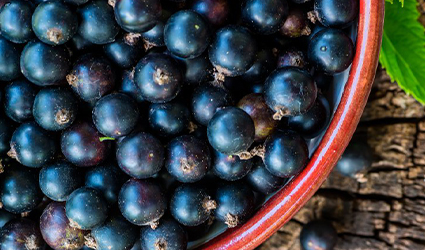Discovery of Natural Blackcurrant Hair Dye
June 6, 2018
Source: Ddu
 686
686

Hair dye poisoning is one of the major causes of self-injury. Chemical hair dye, especially paraphenylene-diamine can lead to edemas, rhabdomyolysis, acute metabolic acidosis and renal failure.
Scientists from the University of Leeds have extracted natural dyes from blackcurrant waste, generated throughout Ribena blackcurrant production. This natural black dye with zero side effects could be used in fresh new hair dyeing technologies.
The research team incorporated their expertise in hair coloration and extraction technology in order to extract anthocyanins from blackcurrant fruit waste. Dr. Richard Blackburn said, “Anthocyanins are pigments that provide color to most berries, flowers, and many other fruits and vegetables; they are non-toxic, water-soluble and responsible for pink, red, purple, violet, and blue colors and are widely used as natural food colorants all over the world.”
Dr. Richard Blackburn, the color chemist who heads the Sustainable Materials Research Group in the School of Design, said “Because of issues and concerns around conventional dyes, we wanted to develop biodegradable alternatives that minimize potential risks to health and offer consumers a different option.”
Professor Chris Rayner, from the Department of Chemistry in University of Leeds, said “We’ve made it possible to have great hair color, and to get it from nature in the most sustainable way possible; we knew they bound strongly with proteins – hair is a protein – so we thought if we could find an appropriate source of these natural colors, we might be able to dye hair.”
The research team is currently working towards the commercialization of their patented blackcurrant natural dye technology through University of Leeds spin-out - Keracol Limited under the brand Dr. Craft.
By DduRead more on
- Things to Know before Buying Newborn Baby Incubators March 31, 2022
- Highly Resistant Food Poisoning Bug Responds to Antibiotics September 6, 2018
- Smartphone Based Diagnosis to Identify Mosquitoes Transmitting Infection September 5, 2018
- 3 Natural Plant Extracts Manufacturers on Drugdu.com September 4, 2018
- Shenzhen Chuanggan – Health Assessment Facility Supplier September 4, 2018
your submission has already been received.
OK
Subscribe
Please enter a valid Email address!
Submit
The most relevant industry news & insight will be sent to you every two weeks.



